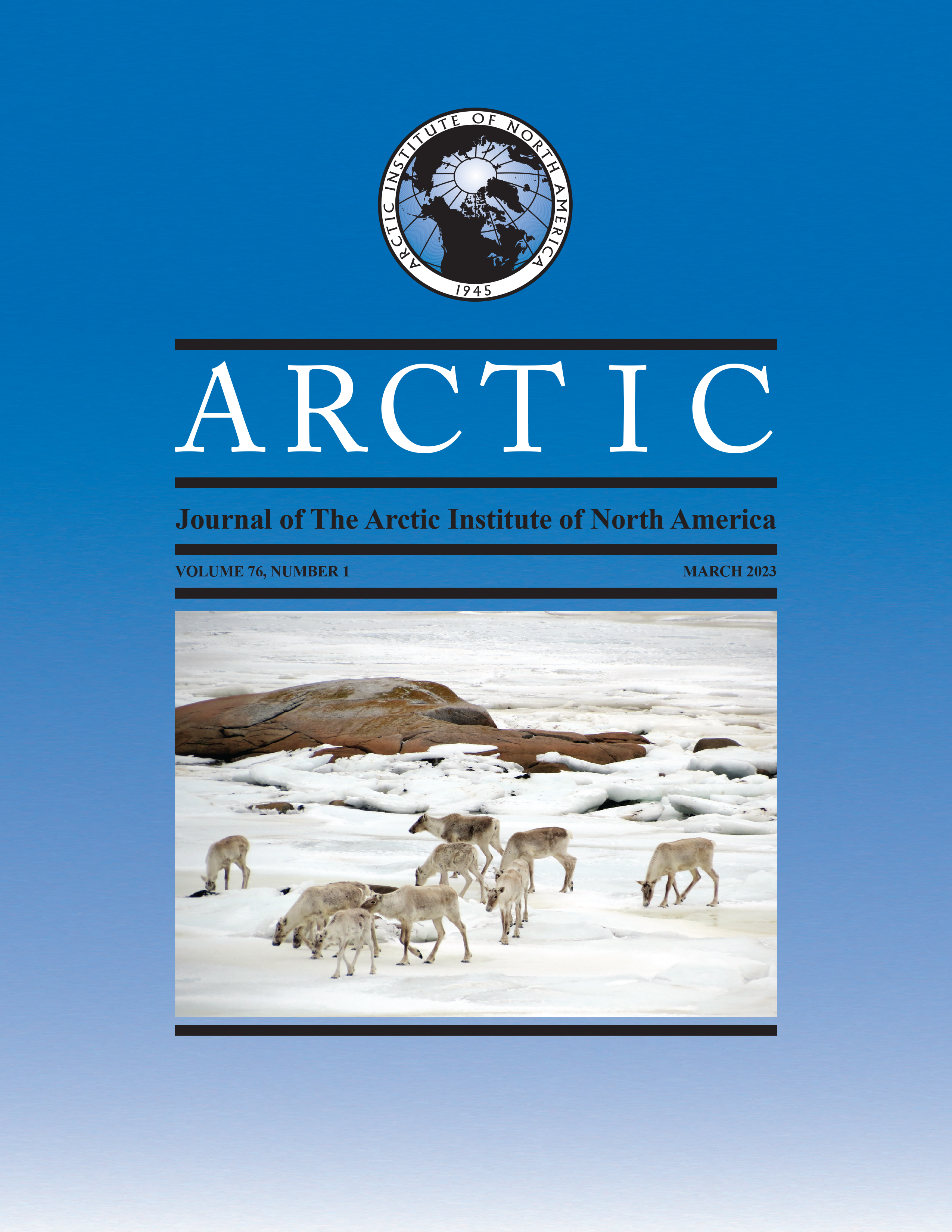Mercury in Soils of Seabird Nesting Islands in West Iceland
DOI :
https://doi.org/10.14430/arctic76992Mots-clés :
carotte; perte par calcination; isotope; Arctique, ornithogéniqueRésumé
À l’échelle mondiale, les oiseaux de mer sont reconnus en tant que vecteurs de matières d’origine marine, celles-ci étant déposées à leurs colonies de nidification de la terre ferme, ce qui peut avoir pour effet de modifier la chimie du sol local. Nous avons étudié le mercure (Hg) se trouvant dans des carottes de sol de deux îles de l’ouest de l’Islande où nichent des milliers d’oiseaux de mer, prédisant que les bonifications en Hg des oiseaux nicheurs donneraient lieu à des taux de Hg élevés dans les sols locaux. Cependant, malgré la preuve évidente d’isotopes d’azote d’influence marine (déjections d’oiseaux de mer) dans les carottes de sol côtier, les concentrations de mercure de l’horizon O atteignaient en moyenne 223 nanogrammes par gramme (ng/g), étaient semblables entre le point de référence et les sites de nidification des oiseaux de mer, et se situaient dans la même gamme de sols que ceux se trouvant ailleurs en Europe et dans l’Arctique. La concentration de Hg diminuait dans le cas des échantillons prélevés plus en profondeur dans les carottes, reflétant des diminutions du contenu organique et des augmentations concomitantes des isotopes stables d’azote. Bien qu’une analyse plus détaillée des processus pédogénétiques locaux s’avère nécessaire dans le but de déterminer la contribution relative du mercure lithogénétique, atmosphérique et anthropique, nos données ne suggèrent pas que les oiseaux de mer fassent augmenter considérablement la teneur en Hg du sol local au moyen de leurs bonifications ornithogéniques.



